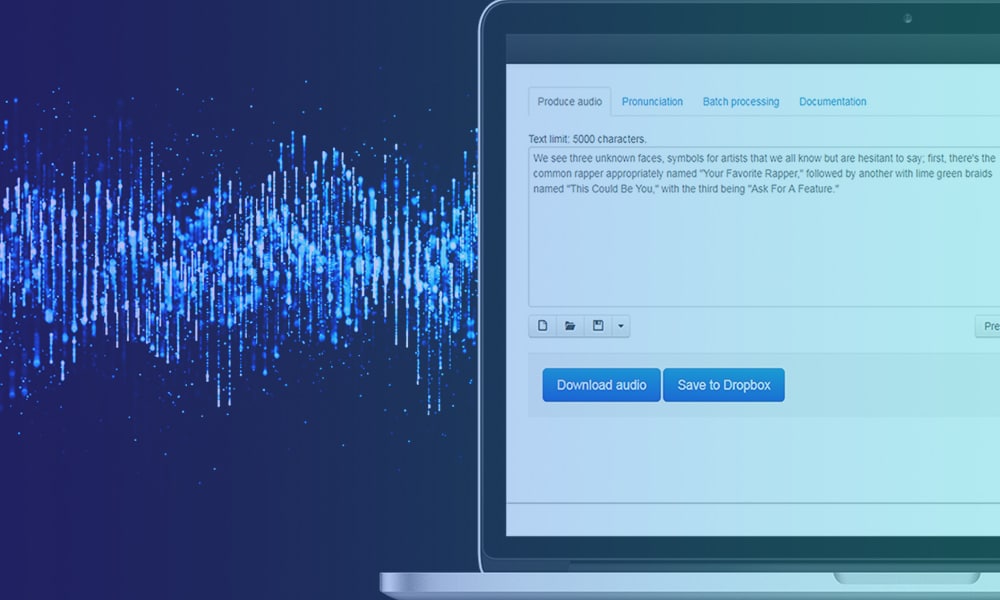Did you know that speech recognition and voice recognition are two separate technologies? People often make the common mistake of misinterpreting one technology with another. Both technologies share some technical background and are developed to boost convenience and improve efficiency. In reality, they are distinct.
Both technologies have their working procedure and different sets of applications. Hence, in this blog, we will learn about speech and voice recognition and comprehend what makes them different. So let us begin!
What Does Speech Recognition Mean?
Speech recognition is a technology that enables a software program to recognize human speech, understand it, and further translate it into text. The process for speech recognition is implemented using machine learning and Natural Language Processing (NLP). Usually, speech recognition programs are evaluated using two parameters:
Speed: It is examined by analyzing the time duration for which the software can keep up with a human speaker.
Accuracy: It is determined by identifying the percentage of errors while converting spoken words into digital data.
Speech recognition is a common software program used in healthcare, businesses, and several other organizations.
How Does Speech Recognition Work?
Speech recognition is an evolving technology that has progressed significantly over the years. It is far better than its initial versions and exhibits high accuracy.
Speech recognition technology essentially relies upon the concept of ‘feature analysis.’ In this method, the voice input is processed using the phonetic unit recognition method, which identifies the similarities between the actual voice input and expected inputs.
This is done to achieve more accurate results. However, achieving complete accuracy in speech recognition is near to impossible due to differences and inflections of accents and speeches in different people.
Let us now understand how speech recognition works:
- The microphone records and translates the vibrations of the speaker’s voice into an electrical signal.
- The signal is further converted into a digital signal using a computer system.
- The digital signal is sent to a preprocessing unit that improves the speech signal and mitigates noise.
- Next, an acoustic model analyzes the input signal and registers phonemes and other parts of the speech to distinguish one word from another.
- The phonemes are then formulated into comprehensible words and sentences, leveraging language modeling.
[Also Read: Custom TTS Solutions for Your Unique Requirements]
What Does Voice Recognition Mean?
Voice recognition is a technology used to determine a speaker’s identity and attribute each instance of the speech to the correct speaker. Unlike speech technology, which focuses on what the user says, the voice recognition system focuses on who the speaker is. Essentially, speech recognition works by analyzing the different speech aspects of different individuals.
How Does Voice Recognition Work?
Voice recognition leverages template matching, where a recorded voice sample is matched against a user’s voice. Before the software is used with a user, the software must be trained to recognize a user’s voice.
Here is how the process works:
- Fore mostly, the voice recognition software is trained by enabling a speaker to repeat a phrase several times on a microphone.
- In the next step, the software computes a statistical average of samples of similar words or phrases.
- Finally, after analyzing sufficient data, the software stores the average sample of the word or phrase as a template in its database.
Notably, voice recognition offers better accuracy than speech recognition.
Comprehending the Difference Between Speech & Voice Recognition

The fundamental difference between speech and voice recognition is in their way of processing. The voice recognition system listens to a user in real time and identifies their voice to follow the command.
Wherein speech recognition works differently and recognizes the user’s speech. It is mostly used for documentation purposes and creating real-time closed captioning.
On the other hand, voice recognition systems are used in voice assistants like Siri, Alexa, and Cortana. The accuracy of voice recognition systems is approximately 98%, whereas speech recognition accuracy is lower and ranges between 90-95%. However, the speech recognition system offers better speed and is more economical.
[Also Read: Automatic Speech Recognition (ASR): Everything a Beginner Needs to Know]
What are these Voice-Enabled Systems Used for?
Both speech recognition and voice recognition systems have their features and use that make them distinct. Here are some of their uses:
Speech Recognition
- It is most prevalently used for transcribing the speech of users into notes. This is your voice assistant taking the input of words you say.
- It is helpful for people with disabilities as they can engage with media more effectively with its use.
- Speech recognition is also used to create metadata and archive data from video files.
Voice Recognition
- It is primarily used for providing voice inputs to a computer so that the task can be completed more quickly.
- It offers great convenience to the users as the software provides better and faster communication to fulfill the user’s operations.
- Voice recognition systems are also used to verify users on a particular software or server.
Glancing at the Use Cases of Speech Recognition and Voice Recognition
The following are some of the applications where speech and voice recognition work:
| Speech Recognition | Voice Recognition |
|---|---|
| Note Making | Voice Assistants |
| Voice Typing | Voice Picking |
| Call Center Transcriptions | Voice Biometrics |
| Mixed-Language Dictation | Hands-free Calling |
Need Speech Recognition or Voice Recognition Technology in Your Next Project?
Both speech recognition and voice recognition are powerful technologies being widely used today. If you are preparing a project that needs the assistance of these technologies, you can reach out to us. We are experts at handling these technologies and developing AI training data for machine learning and other procedures. Visit our website or drop your query to us.








